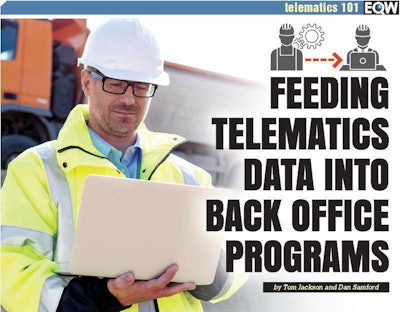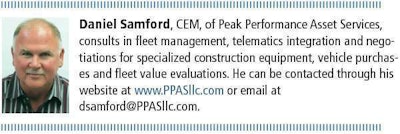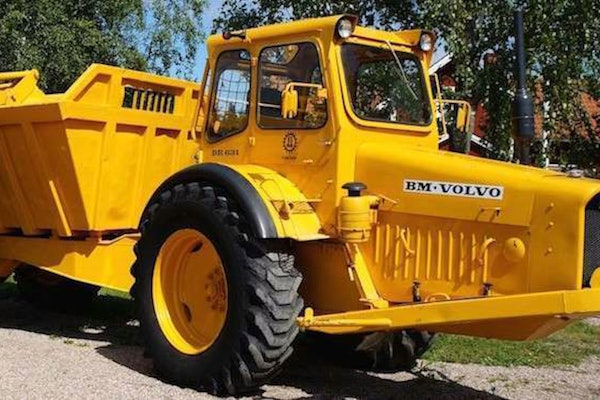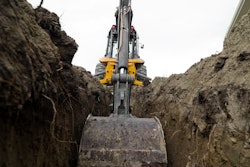
This can yield a lot of useful data and tracking information; the low hanging fruit, so to speak.
But to get to the next level – to get your telematics data feeds to auto-populate a spreadsheet or back office software system – is a significant challenge and one that is just now being tackled by contractors and construction companies.
There are a lot of companies such as SAP, Edwards, Timberline and Viewpoint, that sell back office software to all kinds of businesses, including construction companies. These software packages are typically referred to as ERPs, or enterprise resource programs. Additionally, there are companies that make construction specific software for bidding and estimating, job costing and tracking, and maintenance scheduling and record keeping.
In an ideal world, the telematics data streaming off your machines would come straight into your company servers and fill in all the blanks in all the relevant ERPs and construction management programs. But unfortunately, the telematics data from your equipment and the programing behind your back office software probably don’t speak the same language. What you need is a translation between the two, and that (in most cases), means a custom API or application programing interface.
If you want to go this route, you’ll need to hire a consultant or software programmer to develop a proprietary API to translate between your telematics feed and the back office, bidding/estimating, or maintenance software you want it to feed.
There are some telematics vendors who can export into some ERPs and construction management software, and some that can accept telematics feeds, but most of the custom programs were created in collaboration between large construction companies and their software providers.
Nonetheless, if you are considering a large and integrated telematics system for your fleet, a good question to ask vendors is specifically what ERP and/or back office programs they have previously worked with and currently have connectivity with. If they don’t currently map their data to any, don’t be surprised. This is still a relatively new and evolving area of the industry.
Telematics standard
But, do ask your vendors if they support ISO15143-3 (previously referred to as the AEM/AEMP Telematics Standard). The Association of Equipment Manufacturers (AEM) and the Association of Equipment Management Professionals (AEMP) collaborated on the details of this new standard, which will receive final ISO approval in the second quarter of this year.
ISO15143-3 establishes a common reporting protocol for dozens of types of data coming from heavy equipment. In essence, it is a common language for heavy equipment telematics feeds that is brand agnostic. It allows you to catalog and compare information across multiple brands in your fleet, without having to go to a different OEM website to view each brand of equipment separately.
More than likely, ISO15143-3 will become a key element in developing a common import language for ERPs.
There are still challenges to overcome before this next phase of telematics functionality is achieved on a large scale. The ERP and software providers may want encrypted languages because of the sensitivity of the data and the proprietary nature of their businesses. But, as competition for the contractors’ dollars and data increases, the industry will undoubtedly move in this direction.
Another aspect that will drive the adoption of telematics-to-back office software programing is the substantial benefit it will bring to the company that successfully integrates the two. On big, multi-year projects, it can be difficult to get an accurate picture of the bid vs. build analysis. A lot of companies are flying blind, financially speaking, for the first stages of a project. Hours and costs have to be manually recorded in the field or shop and delivered to the financial people, who then manually enter the data into the software. Lag time between the field and the office may be weeks, or even months.
With auto-populated programs, the usage and costs are recorded and available for analysis in real time. Financial planners will be able to establish benchmarks and monitor progress, or the lack thereof, on a daily basis and make adjustments accordingly.







